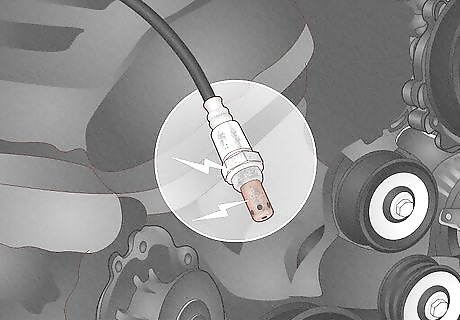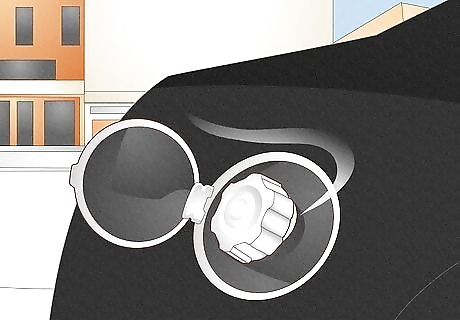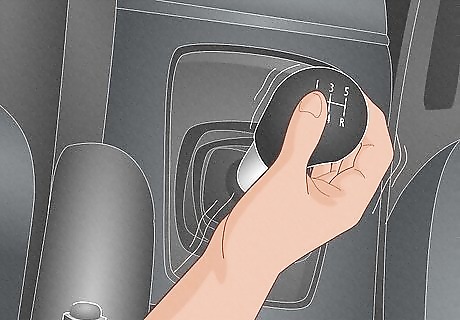
views
- The check engine light indicates something is wrong with your engine, the emissions system, or the computer that monitors those two.
- If there are no other symptoms, your check engine light may indicate a problem with your computer, a loose gas cap, transmission errors, or problems with your O2 sensor.
- If the check engine light is blinking, pull over and call a tow truck. The blinking indicates a more serious problem.
What causes a check engine light to come on?

A check engine light means there’s something wrong with your engine. Your vehicle’s onboard diagnostic computer monitors everything in your car to make sure it’s running correctly. If there’s an issue with your engine—either the engine itself or the emissions coming out of the engine—your check engine light will pop on to let you know something is going on. The check engine light is one of the more serious indicators that can pop on while you’re driving, since it indicates there’s something wrong with the engine, which could potentially be a fire or safety risk. The list of causes for a check engine light is really long, but if you’ve got no other symptoms beyond the check engine light, it’s a lot easier to narrow it down, so don’t worry.
Can I keep driving my car with the check engine light on?

Ideally, you should drive to a mechanic immediately. There is a potential that the check engine light is on for a reason that isn’t particularly serious, but the risks here are pretty big. If the issue here is on the more problematic side of things, ignoring the light could lead to serious and potentially permanent damage to your vehicle. If you are not in an emergency and the check engine light pops on while you’re driving, your best bet is to drive to your mechanic right now. Depending on what the problem is, more serious issues (like vehicle shaking or oil depressurization) could develop at any time. You do not need to get a tow truck if you’re going to the mechanic and you aren’t dealing with any vehicle issues outside of the check engine light. If you do happen to have any other symptoms, like smoke coming from the hood or loud noises in your engine, pull over and call a tow truck. Whether it’s safe to drive or not depends on the problem. If it’s just a computer error, it’s no biggie. If your engine’s spark plugs are firing incorrectly, it could be a serious risk.
Common Underlying Causes

Your car has a computer error and nothing is actually wrong. If your vehicle’s computer loses signal with the emissions system or engine, or the computer runs into a bug, your check engine light may turn on randomly. This is especially likely to be the case if absolutely nothing else is happening and no other dash lights are on. How big of a deal is this? Not a big deal at all. You’re good to drive. What’s the fix? Just reset the check engine light using an OBD-2 scanner. If the light comes back on, it’s probably an electrical issue, so see a mechanic.

Your O2 sensor isn’t properly measuring the air in the engine. The O2 sensor measures the amount of air going into and coming out of your engine. If it doesn’t work properly, your engine’s spark + air + fuel ratios will read like they’re incorrect and the check engine light will pop on. This is probably the cause if you also smell rotten eggs and there’s black smoke coming out of your exhaust. How big of a deal is this? You’re okay in the short term if there are no other symptoms, but you could cause permanent damage to the engine if the O2 sensor is seriously failing. What’s the fix? You either need to install a new O2 sensor, or your O2 sensor needs to be recalibrated by a mechanic.

Your gas cap isn’t sealed properly or it’s damaged. If the gas cap isn’t completely sealed, air is getting into your gas tank. From there, it’s being injected into your engine. But that air isn’t supposed to be there, and your vehicle’s computer knows that! As a result, your check engine light pops on. This is probably the source of the light if you smell fuel inside of your car. How big of a deal is this? This is one of the less serious problems so long as you don’t ignore it forever. There isn’t that much air that get into your engine on a short-term basis. What’s the fix? Try tightening your gas cap to see if the problem goes away. If it does, you’re good to go. Otherwise, purchase a replacement cap designed for your vehicle and install it on your car.

Your catalytic converter is damaged or failing. The catalytic converter is the device that absorbs the harmful emissions from your engine. If it’s failing or damaged, those emissions are either leaking into the environment, or they’re unable to exit your engine entirely. It’s probably the catalytic converter if your vehicle isn’t accelerating properly, the engine is hot, and/or there’s dark smoke coming from the exhaust. How big of a deal is this? This is a big problem. Either your vehicle is an environmental hazard or the engine is experiencing serious wear and tear. Do not drive without a working catalytic converter for too long. What’s the fix? You need to replace your catalytic converter. This is a difficult repair that involves working around noxious chemicals, so it’s best to have a pro do this one.

Your transmission isn’t working correctly. The transmission is responsible for ensuring that an appropriate amount of power goes from the engine to the wheels. But if the transmission isn’t working properly, your diagnostic computer will notice something’s off between your engine and the power output, which will cause the light to turn on. If you also notice it’s hard to reverse or change gears, or you smell something burning, it’s probably your transmission. How big of a deal is this? It depends on the specific problem. Transmissions are tricky, and this could be anything ranging from a need for new transmission fluid to a control module failure. What’s the fix? Again, it depends on the nature of the issue. Transmissions are complicated, so unless you have enough experience to troubleshoot it yourself, see a professional.
What does it mean if the check engine light is blinking?

A blinking light is a symptom of a serious engine problem. A blinking check engine light is basically your vehicle telling you “pull over now, something is wrong.” This indicator means your engine is misfiring, spark plugs are overheating or dying, or you’re leaking fuel or oil. Pull over and call a tow truck to get your vehicle towed to a mechanic. Some vehicles use a red light instead of a yellow blinking light.
How to Diagnose a Check Engine Light

Plug an OBD-2 scanner into the OBD port and run a scan. Purchase or borrow an OBD-2 scanner. Turn the vehicle off and locate the OBD-2 port under the dash panel (it’s normally just below the driver’s wheel). Plug the scanner in and turn your vehicle to the on position. Turn the scanner on and press the “scan” or “run” button and wait for the scanner to read your diagnostic computer’s results. The OBD-2 scanner will spit out a code that you’ll need to look up. Look the code up to find the specific issue going on with your vehicle. If you don’t get an error code, your OBD scanner isn’t working or it’s incompatible with your vehicle model. You should 100% get an error code if your check engine light is on.




















Comments
0 comment